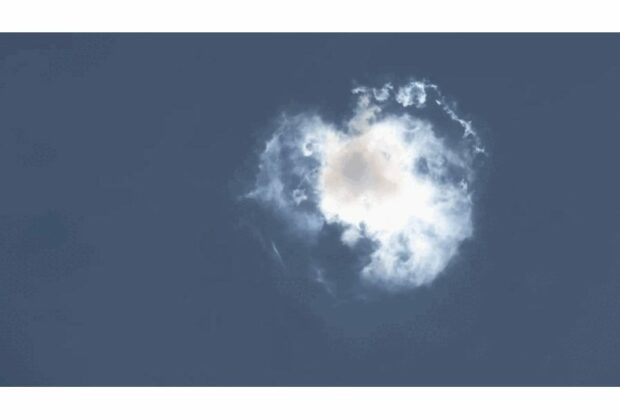The first booster in the program’s history to safely splash down softly in the sea, SpaceX’s Starship, may have burst following the test, according to a purportedly leaked image and a fan analysis making the rounds on social media. The goal of SpaceX’s Starship tests is to push the rockets to the brink of failure so that improvements can be made, but the company has faced backlash for its first three flights, which were criticized for their inability to prevent unintentional explosions, or what SpaceX refers to as “Rapid Unscheduled Disassembly.”
According to a social media user’s research and an allegedly leaked image of the fourth flight’s booster’s final minutes, it appears possible that the booster burst after toppling over near the conclusion of its return profile.
Based on social media analysis, the leaked image of the starship Super Heavy exploding is probably real.
Yesterday, a photograph of what appeared to be the explosion of the Flight Four Super Heavy rocket was published on social media by X user BocasBrain, which took even the most ardent SpaceX fans by surprise. The photo displayed an orange mushroom cloud that could be seen from a buoy that resembled the one that SpaceX used to take the last pictures of its rocket test.
TheSpaceEngineer, also known as X user mcrs987, conducted a thorough investigation shortly after the image was made public. The user shared that, based on their understanding of lighting and image manipulation, the image appeared to capture video footage running on a display due to its warped perspective and the square frame visible in the bottom right. They acknowledged that the multiple lens cameras on the buoy might potentially be to blame for the distortion, but they also mentioned the possibility that water droplets “warped” the footage of the booster’s descent.
The user then reports that the explosion’s light is leaking through the signal light on the buoy. As far as creating the diffusive effect is concerned, they said, “it would be quite challenging to blend” and that the producers of a potentially fraudulent image would go “to extreme lengths like this would just be absolute dedication just to fool a bunch of people.” The clouds above the mushroom cloud provide additional evidence, which user mcrs987 concedes may be proof of a phony image. The research states that the explosion’s “very visible reflection and glow on the clouds” is “stupidly difficult to replicate on an already existing image,” and that these appear to line up perfectly with SpaceX’s footage of the booster’s landing.
Specifics of the booster’s infrasound data that LabPadre on X supplied also reveal increased activity following the cutoff of the landing burn. For mcrs87, this was the last “piece of evidence that could put the final nail in the coffin” that mcrs87 was waiting for. The X user appears convinced that the last data set confirms the suspicion that the booster might have exploded as it tipped post landing as the infrasound data contains “tons of echos and a spike that’s louder than what may be the landing burn or the sonic booms of the vehicle right at startup.”








